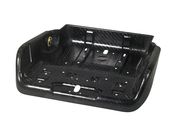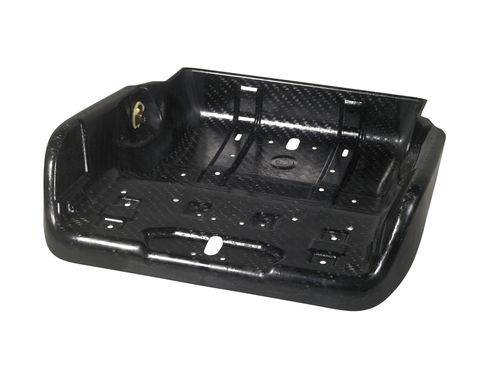Asia
EMEA

LANXESS Canada Contacts
Contact our Sites in Canada
Media Inquiries
General Inquiries
Please click here to e-mail LANXESS Canada with product inquiries and general requests.
Global Press Releases
2013-10-16
Car seat shell made from high-performance composite TEPEX
Weight saving of 45 percent
Enhanced safety thanks to outstanding crash behavior
A car seat shell made from a thermoplastic composite reinforced with continuous glass fibers is being used for the first time in the Opel Astra OPC. The material in question is TEPEX dynalite 102-RG600(2)/47%-1.0mm from LANXESS subsidiary Bond-Laminates GmbH. The seat shell combines impressive stiffness with exceptional strength. This enables it to absorb a great deal of energy in the event of a crash, which results in an excellent level of safety. “It easily outperforms comparable designs made of sheet steel and plastics reinforced with long glass fibers. What’s more, it is around 800 grams lighter than the previous component solution,” says Bond-Laminates Managing Director Dr. Christian Obermann. The seat shell is made by Reinert Kunststofftechnik GmbH & Co. KG, which is based in the German town of Bissingen a. d. Teck. The company worked closely with Opel, Bond-Laminates, SeaTcon AG and SedisTec UG (both located in Wendlingen, Germany), and Maier Formenbau GmbH (also based in Bissingen a. d. Teck) to take the component all the way to the series production stage.
Cost-efficient one-shot process in an injection mold
The high-performance composite TEPEX dynalite 102-RG600(2)/47%-1.0mm has a thermoplastic matrix based on polyamide 6 and is reinforced with 47 percent by volume continuous glass fibers in two layers. To produce the seat shell, the semi-finished composite in sheet form is heated and then placed in an injection mold. It is then molded into shape and immediately overmolded with polyamide 6 filled with short glass fibers to integrate reinforcing ribs and functions, such as mounts for fixing elements. This one-shot process helps to ensure cost-efficient production of the seat shell. The composite’s excellent mechanical properties pave the way for a compact, thin-walled seat shell design. This makes it possible to meet the very “tight” specifications relating to installation space. The outstanding drapability of TEPEX is also highly beneficial, because the seat shell’s geometry results in high thermoforming ratios.
Bond-Laminates provided Reinert and SeaTcon with considerable assistance for making the seat shell. For example, experts from the company contributed specialist know-how on heating the semi-finished composite correctly and handling it in the injection mold. They also helped to optimize the component’s design and construction.
Expansion of industrial composite production
LANXESS expects the demand for composite designs with TEPEX to grow – and not only for seat shells. “We also see great opportunities for other structural components in the automotive industry requiring excellent load resistance such as brake pedals, airbag housings, front and rear seat structures, front end carriers and underbody protection components. This is why we are currently further expanding capacities for the industrial production of TEPEX at our Brilon site,” says Obermann.
For more information on the partners which LANXESS and Bond-Laminates have worked with to bring the seat shell to the series production stage, go to www.reinert-kunststofftechnik.de, www.seatcon.net, www.sedistec.com and www.maier-formenbau.de.
LANXESS is a leading specialty chemicals company with sales of EUR 9.1 billion in 2012 and roughly 17,500 employees in 31 countries. The company is currently represented at 52 production sites worldwide. The core business of LANXESS is the development, manufacturing and marketing of plastics, rubber, intermediates and specialty chemicals. LANXESS is a member of the leading sustainability indices Dow Jones Sustainability Index (DJSI) World and FTSE4Good as well as the Carbon Disclosure Leadership Index (CDLI).
- Gallery




